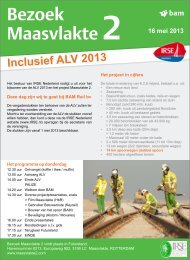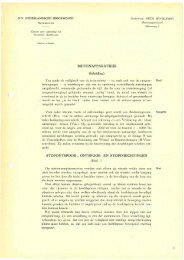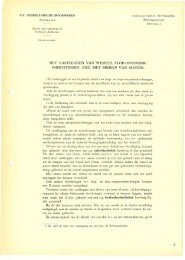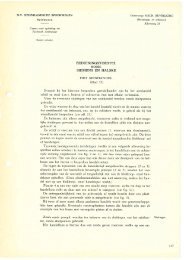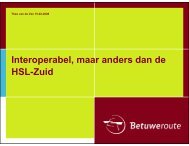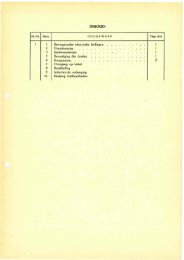intermittent and continuous ATP 101119 - irse.nl
intermittent and continuous ATP 101119 - irse.nl
intermittent and continuous ATP 101119 - irse.nl
- No tags were found...
Create successful ePaper yourself
Turn your PDF publications into a flip-book with our unique Google optimized e-Paper software.
Positioning of Indusi magnetsIn the traditional INDUSI system, supervision was based on speed supervisionwhen passing the magnets or fixed times after that occurrence. In the newer trainborn equipment which is based on micro-processor technology, a <strong>continuous</strong>supervision of braking curves which is triggered when passing a magnet is performedby the software logic.Transmission Based Intermittent Systems.A common feature of the <strong>intermittent</strong> systems described previously is their ratherlimited “data transmission capacity”, usually equivalent to 1 bit of information (signalon or off).Modern <strong>intermittent</strong> systems are based on transmission of data-telegrams totrains. These telegrams are always secured by a safety code, so that sporadicinterference cannot cause an undetected corruption of the message. Existingsystems are either based on transponders with a contact length for data transmissionof less than 1 meter or on loops which can have lengths of up to a few hundredmeters.A typical representative of the transponder solution is the KVB system used bySNCF, which in turn was derived from the Swedish Ebicab system. A minimum of twotransponders is laid out in the middle between the two rails. The duplication of thetransponders primarily guarantees the safety of the system <strong>and</strong> also enables alogical detection of travel direction. The locomotive is emitting pulses of 27 MHzcarrier frequency at a repetition rate of 50 kHz. The trackside transponder transformsthese pulses to a frequency of 4.5 MHz <strong>and</strong> reflects them to the locomotive. Theshape of the amplitude of the reflected signal indicates if a logical one or a logicalzero is transmitted. This system needs no trackside power supply for thetransmission itself <strong>and</strong> hence no cabling if the information in the transponder orbalise is fixed. Active transponders <strong>and</strong>/or transponders transmitting variable dataobviously do need to be cabled.A further development of the transmission principle of Ebicab <strong>and</strong> KVB is appliedin the ERTMS/ETCS Eurobalise.14






